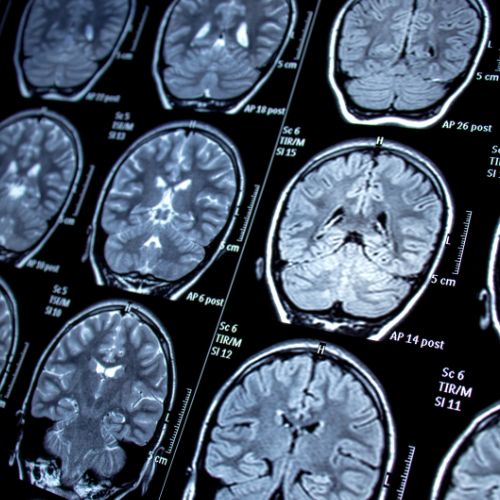NJ neurosurgeons: Minimally invasive spinal fusion may be best option for relief of chronic back pain
At IGEA Brain, Spine, and Orthopedics, each patient is carefully assessed to determine which type of procedure is optimal for their specific situation.
A minimally invasive approach to spinal fusion surgery is offering both near-term and ongoing benefits to people whose chronic back problems have not responded to physical therapy, medication, and even prior surgeries, said Ciro G. Randazzo, MD, MPH, FAANS, and Anil Nair, MD, FAANS.
The board-certified neurosurgeons, who practice with IGEA Brain, Spine, and Orthopedics, explained that spinal fusion surgery permanently binds together two or more vertebrae in the spine, eliminating motion between the vertebrae to reduce pain, improve stability, or address an anatomic deformity.
“As with most medical conditions, a conservative approach to spinal issues often is the best initial approach,” said Dr. Randazzo. “For example, while many people will have disc herniations on imaging, only a small percentage of them will require a procedure. However, if a patient has tried conservative options, such as a course of physical therapy and pain management, and continues to have symptoms despite those interventions, that is when we consider surgical treatment.”
Dr. Nair noted, “If patients are experiencing daily pain that is affecting their quality of life, severe unrelenting pain, weakness, numbness or tingling, or trouble with motor skills, they may be candidates for surgery.”
When an operation is needed to treat a degenerative disc, lumbar stenosis, or other conditions, Dr. Randazzo said, a discectomy or decompression procedure usually is the intervention of choice, with spinal fusion typically reserved for more severe cases, and for the 5% to 15% of patients who have recurrent disc herniation after disc surgery.
Dr. Nair explained that the neurosurgeons at IGEA Brain, Spine, and Orthopedics carefully assess each patient to determine which type of procedure is optimal for his or her specific situation, and then have an in-depth discussion with the patient to review the pertinent data and key points about the recommended approach. “We are all board-certified neurological surgeons who have been performing these surgeries for many years, and can draw on our experience to identify and perform the procedure best suited to a patient’s particular needs,” he noted.
Dr. Ciro G. RandazzoIn some cases, Dr. Nair added, that will mean performing a traditional or “open” spinal fusion, in which the spine is accessed via a standard incision. In other cases, however, the fusion can be accomplished in minimally invasive fashion, through small incisions that usually are 1 to 3 centimeters in length. The neurosurgeon then accesses the spine through a port or tube, and uses a microscope and special instruments to perform the fusion with imaging guidance.“In a basic one-level procedure called transforaminal lumbar interbody fusion (TLIF), the surgeon will use X-rays to visualize the spine in the operating room. In addition, our team at IGEA Brain, Spine, and Orthopedics is now using high-resolution CT imaging in the operating room for greater accuracy,
as well as robots to assist in placement of the hardware used in the procedure,” Dr. Randazzo said. “Following this, the surgeon will remove the facet joint on one side of the spine to give us access to the disc space. We are then able to replace the disc with a fusion graft and place minimally invasive screws above and below the fused disc space as an internal brace. There also are other approaches, such as lateral lumbar interbody fusion (LLIF) and variants on anterior lumbar interbody fusion (ALIF), which use minimally invasive techniques to replace the disc of concern with a fusion graft.”
Dr. Nair said, “It is thought that minimally invasive spinal fusion surgery results in shorter hospital stays, less postoperative pain and discomfort, less blood loss, and a faster return to presurgical activities than open surgery, while offering similar outcomes.” His colleague, Dr. Randazzo added, “Many patients can go home on the same day as surgery, but we take an individualized approach to each patient. While being home is ideal, there are benefits to staying in the hospital overnight to ensure comfort levels before returning home. Once home, patients can do light activity until they follow up in the office after which time they will start a physical therapy regimen to build up their strength and endurance. Some patients will wear a brace, particularly when out of bed, for additional support during their recovery. After six weeks or so, the majority of patients are able to return to normal activity.”
Whether performed as an open or minimally invasive procedure, spinal fusion provides most patients with relief from their back pain, the physicians noted.
Dr. Randazzo added, “Spinal fusion is a good option for treating spinal conditions in the right patient. Minimally invasive spinal fusion takes this to the next level by shortening recovery and minimizing muscle trauma to improve outcomes. At the same time, open procedures are more appropriate in certain situations, or given the presence of certain anatomic features, such as a high riding iliac crest or hip bone. The important thing is to have a surgeon who is well trained in the different techniques so that he or she can offer you the best option for your individual situation.”
Dr. Nair concluded, “People experiencing significant back pain or the other issues caused by spinal problems can become quite discouraged, often thinking that they ‘just have to live with it.’ However, we have made significant advances in treating these conditions in recent years, both in terms of medical management and surgically. A significant majority of the people we see in our practice do not require surgery, and we often can help them by starting them on a course of non-surgical treatment. If surgery should be needed, the options and outcomes available today are better than ever before, so I would urge people to take the first step to understanding what choices – and relief – are available to them.”
The IGEA Brain, Spine, and Orthopedics team of board-certified neurosurgeons performing minimally invasive spinal fusions includes Dr. David Poulad and Dr. Adam Lipson, as well as Dr. Randazzo and Dr. Nair.







